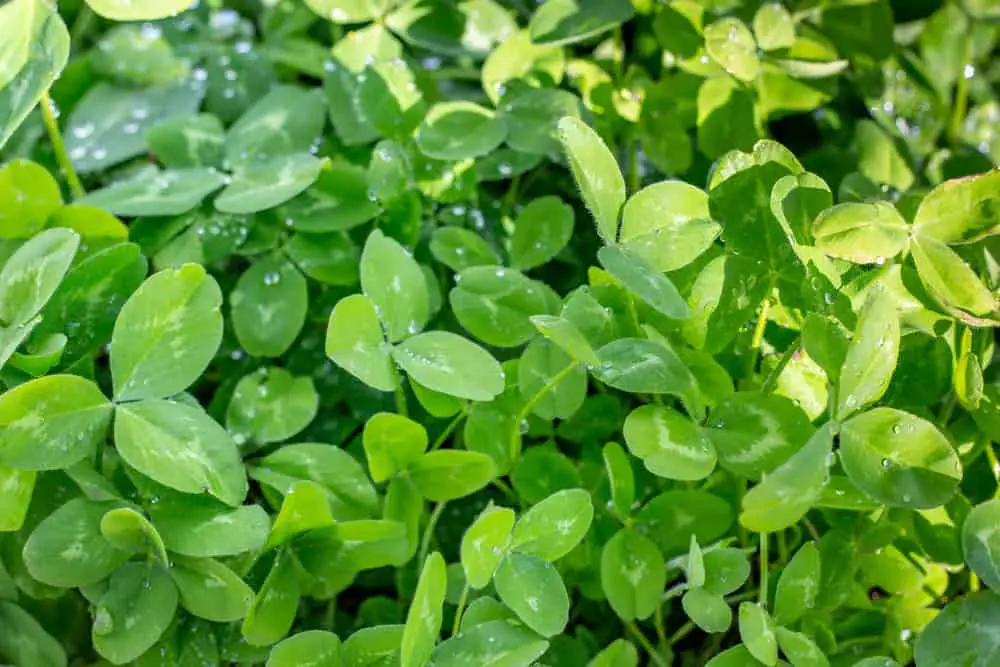My super successful turkey food plot was a complete and total result of luck. So was my deer food plot. I know; I’m supposed to claim I am the expert here. I should demonstrate years of effort, mistakes, and finally, success. However, all the turkeys that dine around my property come here in vast numbers because I was a cheapskate.
I will tell you what I did, but for now, select a pasture mix grass seed (with clover) that matches your soil type in a bag large enough to cover the desired area. Get that seed in before turkey starts, and you are done. If you get turkeys to come in and bag a big gobbler, tell them you got lucky finding this article. Luck, like a person, should get all the credit they deserve.
Related: Best time of day to hunt turkeys.
Related: Calling turkeys.

How to make a turkey food plot.
To get turkeys to come where you want them offer them food, the safety of cover, and a place to strut their stuff.
The best way to make a turkey food plot is to place it near a wood line that provides cover and opens directly into the food source. Plant a simple pasture grass mix (with clover) or some wheat or grain ryes in spring or fall and double the seeding rate to give the clover protection while it grows.
Turkeys love clover! Even after the deer have stripped your plot of what they desire, that clover will come back strong just in time for spring turkey hunting season. If you placed it correctly, they can safely approach using the cover you provide, eat their fill, and then dance around and call themselves a mate.
Using a clover turkey food plot for mating? You bet! White clover grows to a height of 4-8 inches, and the hens can hear and see the toms from a long way away. Red clover can get as much as two feet high, but it is drought tolerant and better suited for dry soil conditions in some areas.
Red clover might strike you as being too tall, but the secret here is that you will know where they are and be able to see them. A turkey’s mating concerns? I mean, you hunt them, not breed them—right? Not your problem, if you get my drift. You want them in a particular place, every day. A good turkey food plot will do that for you.
Related: How to find a wounded turkey.
The cheapest way to plant a turkey food plot.
Hey, spend all the money you want to to build your turkey food plot. You want to spend $6 a pound, that’s your right. I buy from a local grass seed dealer, ask for a pasture mix of oats, wheat, barley, crimson clover, turnips, rapeseed, and annual ryegrass, and I pay about 75 cents a pound.
For less than a buck a pound, I bring in droves of deer and flocks of turkeys. And, as I have already admitted, it was all dumb luck. I cleared a logged lot, wanted to save money on grass seed, and went with the much cheaper pasture mix instead. I had no idea this mix required no care on my part. It took off and grew on the nutrients it got from the soil and the water from the heavens, and I never touched it again.
Ten years after dumping this pasture mix seed on the ground, and in the middle of a drought, there are three hens out there feeding– I don’t know how many poults—right this minute. Some fall nights, I’ve seen as many as 17 deer grazing on less than 2 acres. During deer hunting season, I’ve watched bucks crash into each other and sprinkled the ground with their blood shortly after. All this turkey and deer activity and I have never so much as walked on that plot since the day it was planted.
Except that is, to collect my harvest.
Related: Is that turkey a jake or a tom?
The perfect turkey hunting food plot.
Save yourself a bunch of money and time reading endless articles. Throw down twice the recommended pasture mix in the spring or fall, and leave the area alone. If you got the right seed for your soil (ask a local grass seed dealer), you’ll be taking huge gobblers next season.

